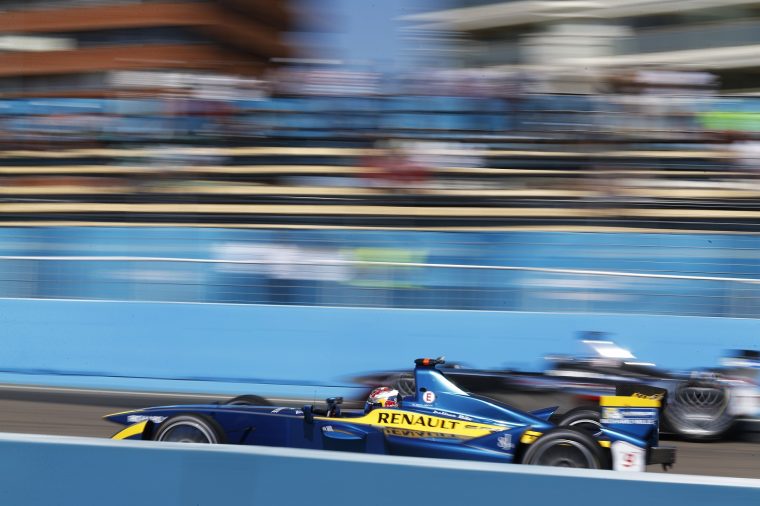Formula E-fficiency
[vc_row][vc_column][vc_column_text]
Ahead of the Punta Del Este ePrix, Renault Sport Project Leader, Vincent Gaillardot, talked about the efficiency of the Renault Z.E.15.
The electrical energy the Formula E car can use is limited by the regulations. This season, the battery, which is the same for all cars in the field, is limited to 28kWh. With everyone getting the same amount of energy to begin with, the trick to getting an advantage is to make sure as much of that energy is used.
“Essentially Formula E is an efficiency competition between electrical powertrains,” he said. “The idea is to maximise that 28kWh available as it is transferred through the powertrain and to the track.”
In the second season, the teams are able to design and develop their own powertrain.
“During development our job here at Renault Sport was to optimise the powertrain in order to maximise that efficiency and minimise energy loss in the process.”
Gaillardot outlined the different ways energy can be lost, including resistance in the power train and excess heat generation.
The weight of the car can also have an impact on the efficiency.
“As with all forms of motor racing, it is also vital that we can make the car as light as possible,” Gaillardot said. “Regulations dictate that the minimum weight – including driver – should be 888kg, so we try and stay as close to that as possible. It may seem obvious, but being as light as possible can make a huge difference to efficiency.”
[/vc_column_text][/vc_column][/vc_row][vc_row][vc_column][vc_column_text]
Image courtesy of FIA Formula E Media
[/vc_column_text][/vc_column][/vc_row]





 No part of this website or any of its contents may be reproduced, copied, modified, adapted, used or distributed without the prior written consent of the author. e-racing.net is not responsible for the content of external sites or links.
No part of this website or any of its contents may be reproduced, copied, modified, adapted, used or distributed without the prior written consent of the author. e-racing.net is not responsible for the content of external sites or links.